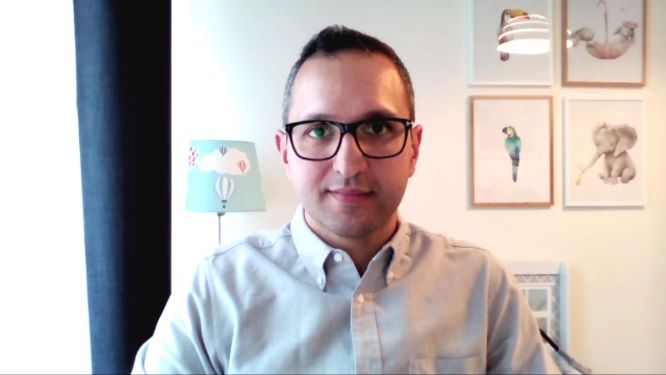 CLOUD
CLOUD
 CLOUD
CLOUD
 CLOUD
CLOUD
While businesses are increasingly modernizing their IT infrastructure and going cloud native, the tools for developing and delivering applications to them are older, predating Kubernetes. Because of this, cloud native development has spawned a need for continuous integration and continuous delivery, or CI/CD, tailored to the requirements of these new architectures and processes, according to Siamak Sadeghianfar (pictured), senior principal product manager of cloud platforms at Red Hat Inc.
Teams are seeking alternatives that are native to Kubernetes and build on the same infrastructure and abstractions that their applications do. Answering the demand, open-source solutions provider Red Hat Inc. has made available OpenShift GitOps and OpenShift Pipelines, new features for its Kubernetes-based OpenShift platform, to make it easier the development of cloud native applications.
“There is always a clash of how do I build cloud natives application using these technologies that are not really built for cloud native space, and OpenShift Pipelines, OpenShift GitOps are really an opening in this direction and bring more cloud native ways of continuous integration and continuous delivery to customers on OpenShift,” Sadeghianfar said.
Sadeghianfar spoke with John Furrier, host of theCUBE, SiliconANGLE Media’s livestreaming studio, during the recent KubeCon + CloudNativeCon. They discussed the new needs around cloud native applications, the differences between the cloud native CI/CD process and traditional CI/CD, and how OpenShift Pipeline and OpenShift GitOps fit into this arena. (* Disclosure below.)
There are fundamental differences between cloud native CI/CD and traditional CI/CD, according to Sadeghianfar. While in the traditional model there are usually monolithic solutions that run in a virtual machine on a type of infrastructure that is also used to deploy applications, in the cloud native environment there is a much more dynamic architecture.
“In the cloud native ways of CI/CD, you’re running most likely in a container platform, you don’t have dedicated infrastructure, you are running mostly on demand and you scale when there is a demand for running CI/CD, for example, rather than dedicate infrastructure to it,” he explained.
GitOps is a declarative way to implement continuous deployment for cloud native applications. Business can use GitOps to create repeatable processes for managing OpenShift Container Platform clusters and applications across multi-cluster Kubernetes environments. Red Hat OpenShift GitOps ensures consistency in applications when businesses deploy them to different clusters in different environments, such as development, staging and production.
Sadeghianfar sees GitOps — a descriptive form of DevOps principles — and Kubernetes fitting together very well.
“The core principle of GitOps is that you think about everything in your infrastructure and application in a declarative manner, so everything needs to be declared in a number of gate repositories and you drive your operations through Git workflows, which if you think about, it is quite similar to how Kubernetes operates,” he explained.
Meanwhile, OpenShift Pipelines is based on the open-source project Tekton, which provides a framework for creating cloud native CI/CD pipelines using Kubernetes. It is designed to run each step of the CI/CD pipeline in its own container and allows each step to scale independently to meet the demands of the overall application.
“We want to make sure that for developers starting on OpenShift, they have a really solid cloud native foundation for CI/CD … they have a supportive platform that is cloud native, that gives them capability that matches the type of cloud native workloads that they have on the platform but also integrate well with existing tooling that exists around CI/CD,” Sadeghianfar concluded.
Watch the complete video interview below, and be sure to check out more of SiliconANGLE’s and theCUBE’s coverage of KubeCon + CloudNativeCon. (* Disclosure: Red Hat Inc. sponsored this segment of theCUBE. Neither Red Hat nor other sponsors have editorial control over content on theCUBE or SiliconANGLE.)
Support our mission to keep content open and free by engaging with theCUBE community. Join theCUBE’s Alumni Trust Network, where technology leaders connect, share intelligence and create opportunities.
Founded by tech visionaries John Furrier and Dave Vellante, SiliconANGLE Media has built a dynamic ecosystem of industry-leading digital media brands that reach 15+ million elite tech professionals. Our new proprietary theCUBE AI Video Cloud is breaking ground in audience interaction, leveraging theCUBEai.com neural network to help technology companies make data-driven decisions and stay at the forefront of industry conversations.